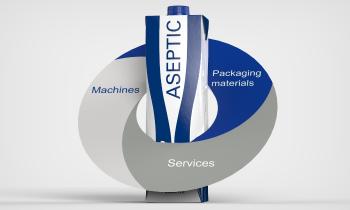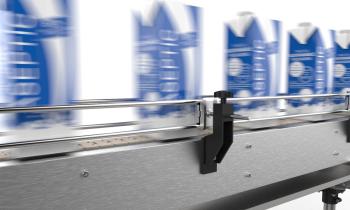Lean Six Sigma: optimising production processes in the carton packaging sector as well
Contents of the article
1. TIMWOOD: THE KEY TO IDENTIFYING WASTE
2. THE LEAN SIX SIGMA METHODOLOGY IN DETAIL
3. LEAN SIX SIGMA AS SYNERGY
4. LSS AND THE PRODUCTION PROCESS: OVERALL QUALITY AND DEFECT ANALYSIS
5. LSS FOR LARGE COMPANIES AND FOR SMALL AND MEDIUM ENTERPRISES
6. WHAT ARE THE ADVANTAGES FOR A SUPPLIER THAT IMPLEMENTS THE LSS METHOD IN THE CARTON PACKAGING SECTOR?
Lean Six Sigma (LSS) is a methodology that aims to optimise processes by eliminating waste, increasing their performance in terms of efficiency and operational effectiveness.
Lean Six Sigma was created and developed between the 60s and 80s in Japan in the world of Toyota.
In a continuous process, such as aseptic carton packaging, LSS methodology is structured according to certain stages. It begins with determining the issues in the process to then identify the respective root causes, and consequently the corrective actions that allow eliminating them or at least reducing them. All this is geared towards positive results in terms of cost and waste reduction, also leading to an improvement in the quality of the final product.

TIMWOOD: the key to identifying waste
In the LSS methodology, potential waste is identified with the acronym TIMWOOD which stands for Transport, Inventory, Moving, Waiting, Overproduction, Overprocessing and Defects.

When we talk of raw materials, the waste generated is manifested mainly in the form of deviations, in connection with any organisational or production process issues, which generate quality defects.
The Lean Six Sigma methodology in detail
The LSS approach to reducing waste requires first of all reliability and repeatability in the method for measuring defects. This may seem like a foregone conclusion, but too often it lies at the heart of the company’s difficulty in improving its performance. In the case of technological problems, only an unambiguous and clear internal definition of the defects found ensures correctly identifying the issue and, then, adopting actions aimed at resolving it.
In terms of defects, concrete activities designed to allow reducing defects and consequently generating value, are:
- A written definition of the defect with supporting photos;
- Defining the number of samples needed to be able to consider the analysis statistically significant;
- Defining the means for measuring the values gathered.
The data – thus collected and statistically analysed according to the methods suggested by LSS methodology – will be truly useful, enabling the identification of the root causes of waste, aiding the company in the problem solving process, and achieving sustainable results in the long term.
LSS as synergy
Implementing LSS methodology generates value, especially when creating synergies between the various stages and components of the production process. In the business of aseptic carton packaging for food liquids and beverages, the main elements called to interact with each other are:
- the UHT process plant;
- the aseptic filler;
- other secondary packaging machines (cap applicator, straw applicator, conveyor belts, case packers, wrapping machines etc.);
- the packaging material;
- closing systems (caps, straws etc.);
- the food liquid to be packaged.
LSS and the production process: overall quality and defect analysis
The production process stages are strongly correlated with each other and the presence of any irregularities in any one of these can generate issues with the quality of the packaged product. Identifying the origin of the defects can be costly and complex, forcing the interruption of production activity for even significant periods; it is therefore crucial to identify the root cause of the problem as quickly as possible in order to limit its impact.
It may be possible, for example, that the defectiveness of the packaged products is due to malfunctions in the processing system and not the aseptic packaging activity.
To tackle this kind of issue quickly, it is necessary for the manufacturer and their machinery and material suppliers to work synergistically by adopting a professional approach to solving problems. The Lean Six Sigma methodology means precisely this: adopting a structured approach to manage professionally and objectively (from a data-driven perspective) all functional activities for quickly identifying the causes of the issues, implementing any corrective procedures, and lastly eliminating defects sustainably over time.
In particular, interventions made using LSS methodology lead to defining standardised control and verification processes that allow a faster resolution of the issues. Over time, this is a sustainable procedure thanks to the growth of all those involved in terms of know-how.
LSS for large companies and for Small and Medium Enterprises
Lean Six Sigma is not the prerogative of structured, large or multinational companies alone; instead, it can provide a crucial contribution in satisfying the various improvement needs typical of start-ups and small businesses.
Large structured companies: multinationals, leading brands and co-packers
Large producers of UHT milk, juices, wine and beverages, tomato purées, broths and other liquids in aseptic carton can greatly benefit from the systematic application of LSS methods. Indeed, the volumes processed mean that every small improvement will lead to great value in terms of cost reduction and impact on EBIT. In these production contexts, the factors that make adopting LSS methodology easier are certainly the great availability of data and information of various kinds (current and historical) as well as the high-level know-how already present and widespread in the company at all levels.
However, in some cases, this same experience – which often goes hand in hand with established habits – can represent an obstacle to change. In this case, change management that allows observing the processes from another viewpoint becomes essential, highlighting the continuous improvement that would be obtained with the change. Exploiting the experience of suppliers who implement this methodology can be an added value and a continuous stimulus to achieving new goals together.

Start-ups and small producers
Start-ups represent a different context: often these are small companies that find themselves designing the entire production process from scratch with little experience behind them. Finding the right partner to rely on is, all the more so, a key factor for success. For a small company, adopting the Lean Six Sigma methodology right from plant construction – thus taking advantage of the planning skills, risk analysis and standardisation that any supplier already has – means setting up one’s business with an eye on the future, laying the foundations for a growth that is sustainable over time.
What are the advantages for a supplier that implements the LSS method in the carton packaging sector?
In a technologically advanced and complex production environment such as aseptic carton packaging, using partners who adopt the Lean Six Sigma approach is increasingly important for remaining competitive over time.
IPI adopts the LSS principles in all its activities:
- at the customer’s production facilities, to always ensure the highest levels of efficiency and reliability in the production of the finished product;
- internally, in the production processes of both the packaging materials and the machines that make up the aseptic filling line, in order to create solutions that meet the customer’s expectations;
- with its suppliers in view of continuous improvement of the entire value chain.
Would you like to know more on the advantages for your company in terms of packaging process optimisation?
 ASEPTIC SOLUTIONS PROVIDER
ASEPTIC SOLUTIONS PROVIDER
 FILLING EQUIPMENT
FILLING EQUIPMENT
